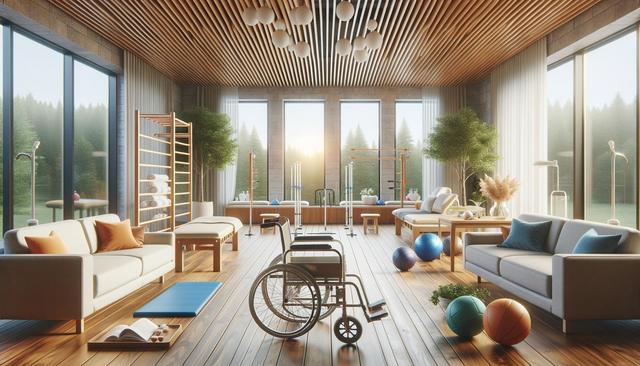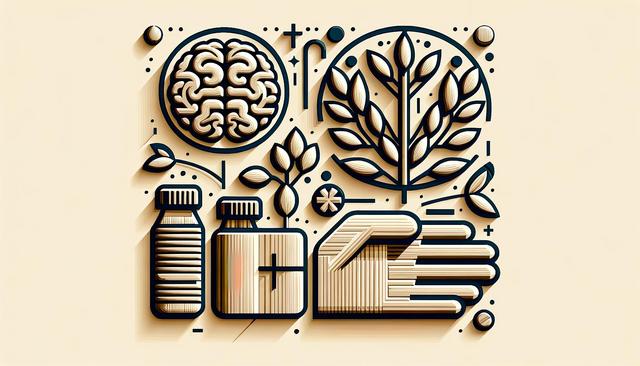Understanding Stroke Rehabilitation
Stroke rehabilitation is a critical phase in the recovery journey, aiming to help patients regain lost skills and improve their quality of life. A stroke can affect mobility, speech, cognition, and emotional well-being, depending on its severity and the area of the brain impacted. Rehab centers for stroke patients are designed to provide structured, multidisciplinary care that targets these diverse challenges. The focus is on restoring function and helping individuals adapt to any lasting impairments with the help of medical professionals, therapists, and support staff.
These centers typically offer customized treatment plans that are tailored to each patient’s needs. The first step often includes a comprehensive evaluation by a rehabilitation team that may consist of neurologists, physical therapists, occupational therapists, speech-language pathologists, and psychologists. Based on this assessment, a personalized recovery plan is created that outlines therapeutic exercises, goals, and timelines. Rehab centers may also provide access to adaptive technologies and tools that assist with daily tasks and communication.
Types of Rehabilitation Services Offered
Rehab centers for stroke patients offer a wide range of services aimed at restoring independent functioning. These services typically fall into several categories:
- Physical Therapy: Focuses on improving strength, balance, coordination, and mobility through guided exercises and movement training.
- Occupational Therapy: Helps patients relearn everyday tasks such as dressing, eating, and bathing. Therapists may also introduce adaptive strategies and tools.
- Speech and Language Therapy: Assists with communication challenges and swallowing difficulties, which are common post-stroke issues.
- Cognitive Rehabilitation: Targets memory, attention, and problem-solving skills, often using structured activities and mental exercises.
- Psychological Support: Addresses emotional and mental health concerns such as depression, anxiety, or adjustment disorders.
These services are provided in both inpatient and outpatient settings, allowing flexibility depending on the patient’s condition and support system at home. Some centers may also offer home-based rehabilitation for those with limited mobility or transportation options.
Benefits of Specialized Stroke Rehab Centers
Choosing a dedicated rehab center for stroke recovery offers several advantages over general rehabilitation facilities. These centers are specifically equipped with technologies and therapies suited for stroke-related impairments. The staff is often trained to manage the unique medical and psychological needs of stroke survivors, ensuring a higher level of targeted care. By focusing exclusively on stroke recovery, these centers can also maintain a high level of expertise and consistency in treatment approaches.
Key benefits include:
- Faster and more focused recovery through stroke-specific therapies
- Access to peer support from other stroke survivors
- Better monitoring of associated health risks such as blood pressure and cardiovascular health
- Individualized goal-setting to track progress effectively
Moreover, some rehab centers offer family education programs to help caregivers understand the condition and provide meaningful support at home. This holistic approach ensures that rehabilitation extends beyond the clinical setting into everyday life.
What to Look for in a Rehab Center
When selecting a rehab center for stroke recovery, families and patients should consider several important factors to ensure the facility aligns with their needs. Accreditation is a key indicator of quality, as it reflects adherence to established standards in healthcare and rehabilitation. Experience in treating stroke patients specifically is another crucial criterion, as it ensures the staff has relevant expertise.
Other aspects to evaluate include:
- Availability of a multidisciplinary care team
- Customized treatment plans and regular progress evaluations
- Access to modern rehabilitation equipment and technology
- Family involvement and caregiver training programs
- Flexible care options (inpatient, outpatient, or home-based)
Touring the facility, speaking with staff, and reviewing patient testimonials can also provide useful insights. If possible, patients and families should ask about expected outcomes, average recovery timelines, and any support services offered after discharge, such as community reintegration programs or follow-up therapy.
Long-Term Recovery and Support
Stroke recovery is often a long-term process, and rehab centers play an essential role in supporting patients throughout various phases of healing. After the initial intensive rehabilitation, many patients continue to benefit from ongoing therapy to maintain and enhance progress. This might include weekly outpatient sessions, group therapy, or telehealth-based rehabilitation, especially for those in remote areas.
Sustained support is important not only for physical recovery but also for emotional well-being. Stroke survivors may face new challenges as they reintegrate into their communities, workplaces, and social circles. Continued access to therapists, peer networks, and educational resources can help individuals adjust and thrive in their post-stroke lives. Rehab centers that maintain long-term engagement with patients contribute significantly to improved outcomes and overall satisfaction.
Additionally, some centers partner with community organizations to provide resources such as vocational training, recreational activities, and support groups. These services can enhance quality of life and foster a sense of purpose and connection, which are vital components of holistic recovery.


